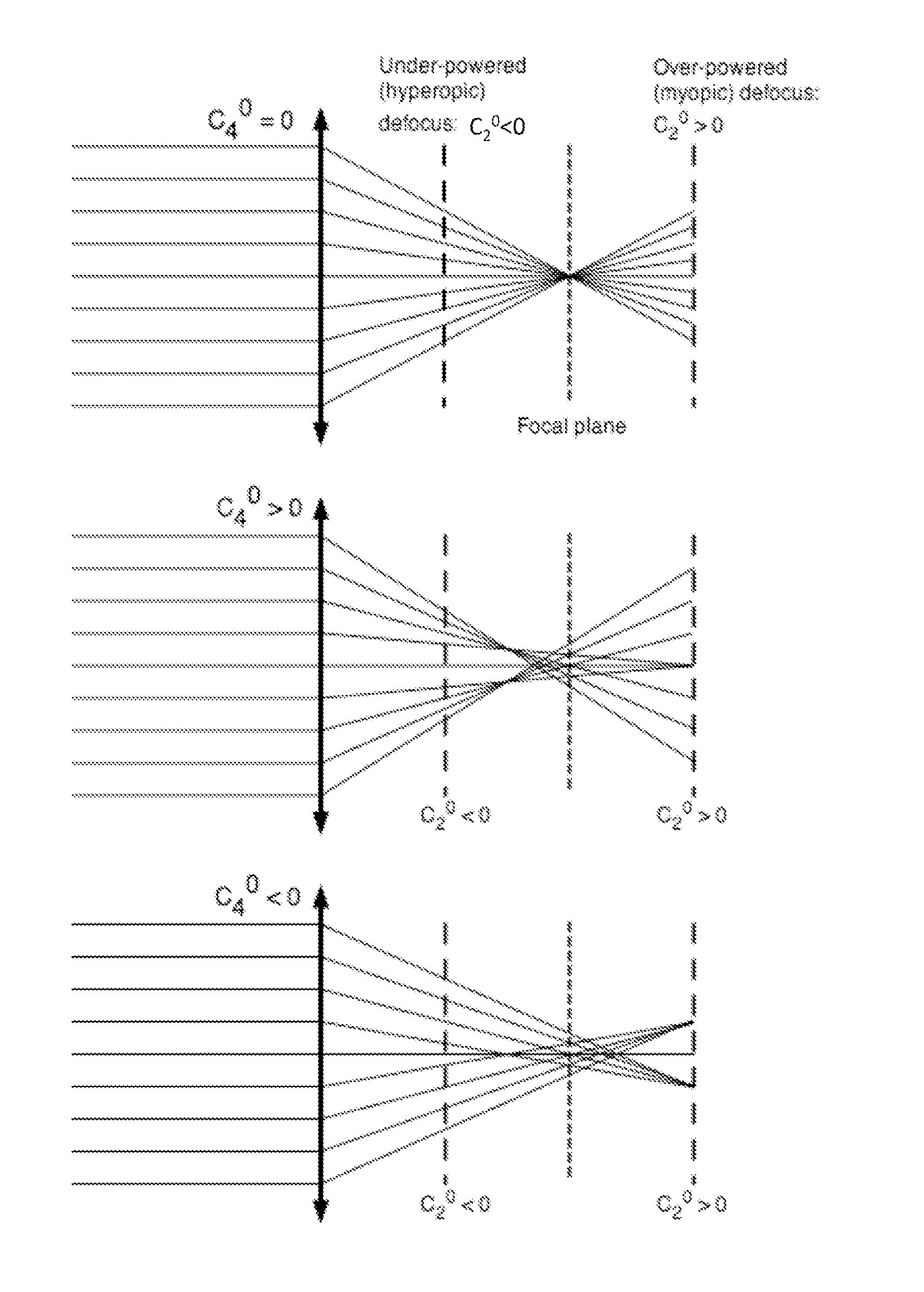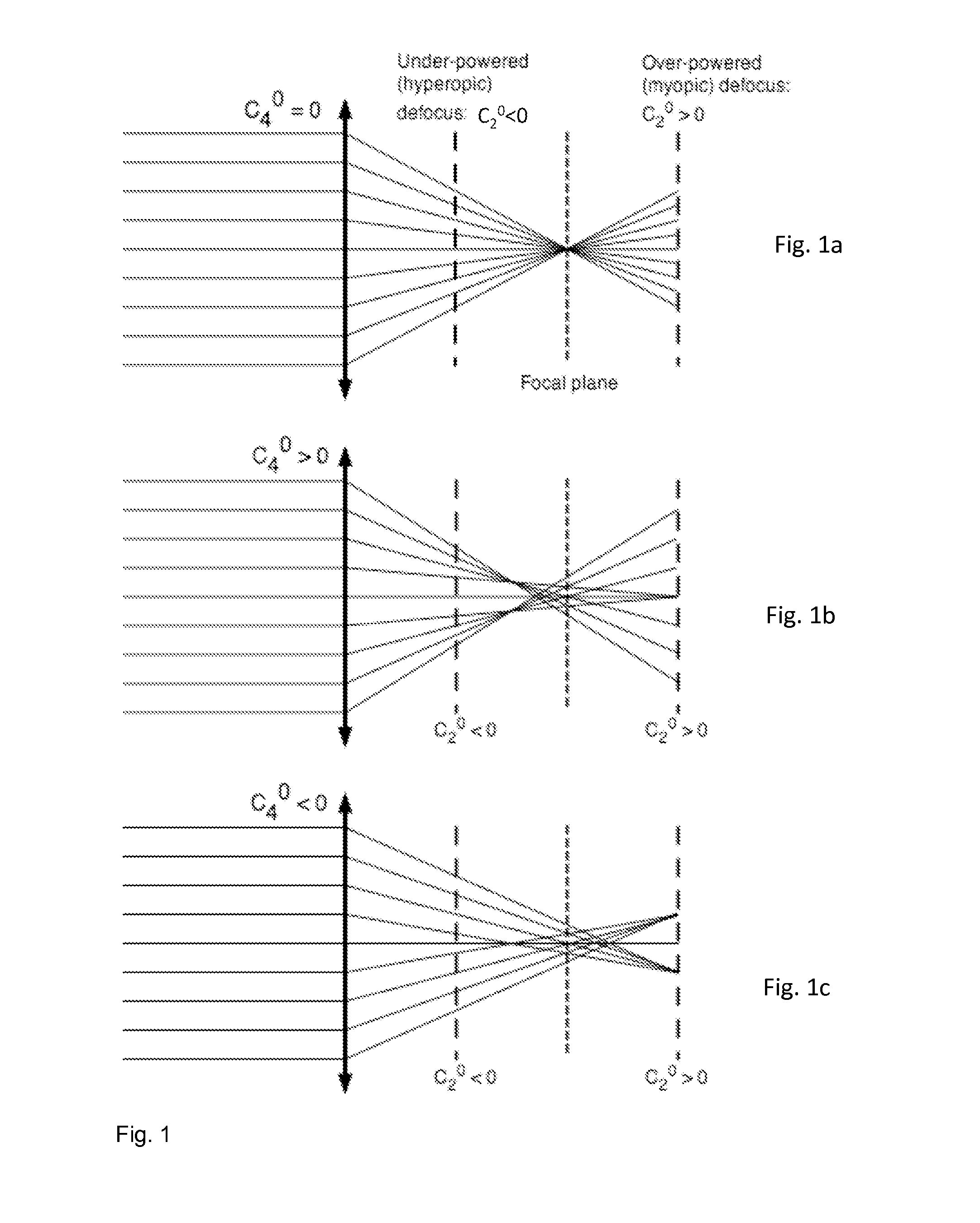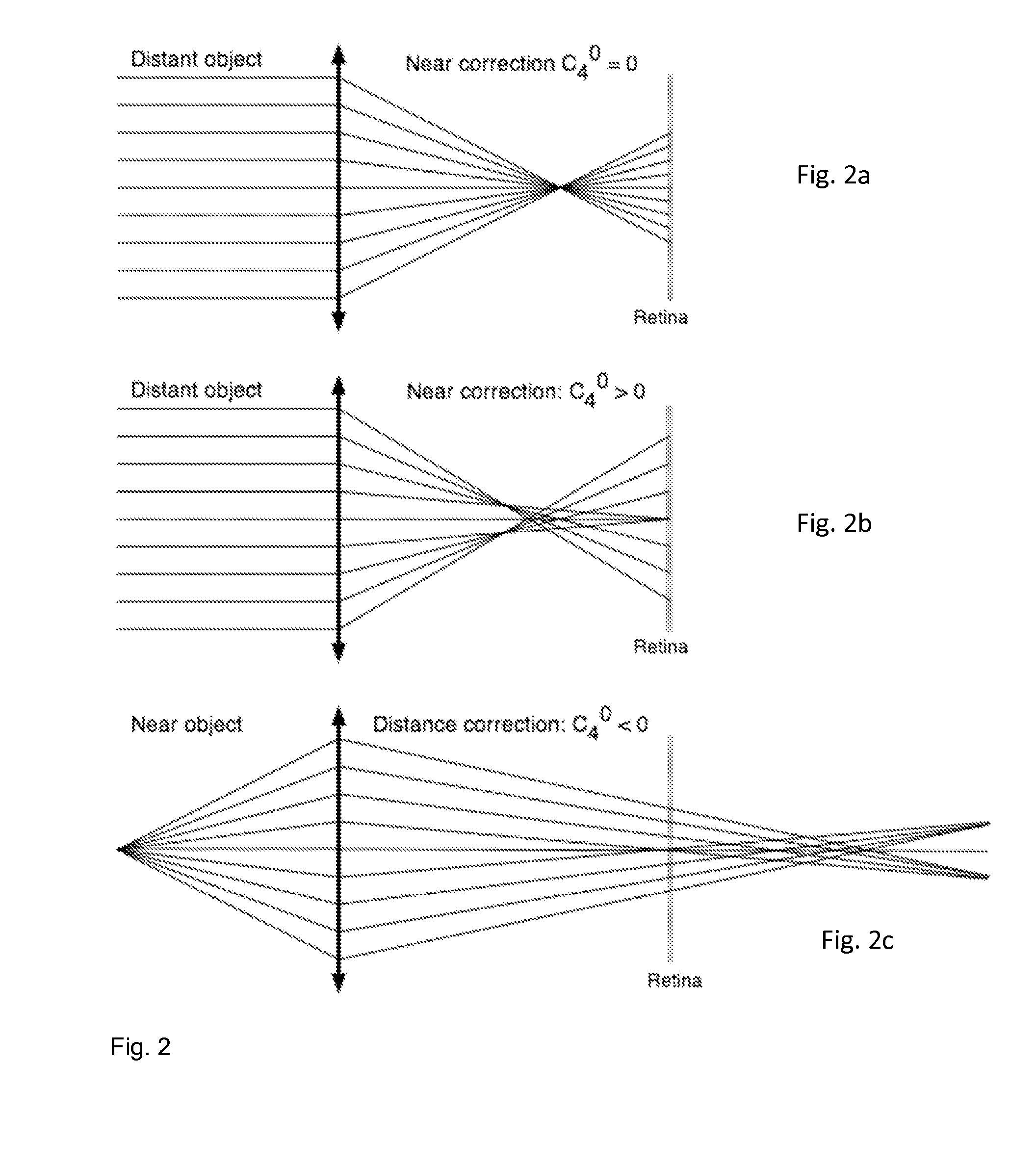Multifocal correction providing improved quality of vision
a multi-focal correction and quality improvement technology, applied in the field of ophthalmic optical and surgical visual corrections, can solve the problems of reducing the overall success of these presbyopic corrections, high visible and visually unacceptable defocused ghost images, etc., to reduce the visibility or minimize the visibility of ghost images, increase the depth of field, and eliminate or minimize the effect of ghost images
- Summary
- Abstract
- Description
- Claims
- Application Information
AI Technical Summary
Benefits of technology
Problems solved by technology
Method used
Image
Examples
Embodiment Construction
[0019]For the purposes of clearly, concisely and exactly describing exemplary embodiments of the invention, the manner and process of making and using the same, and to enable the practice, making and use of the same, reference will now be made to the exemplary embodiments illustrated in the figures and specific language will be used to describe the same. It will nevertheless be understood that no limitation of the scope of the invention is thereby created, and that the invention includes and protects such alterations and modifications to the illustrated embodiments, and such further applications of the embodiments illustrated and described herein as would occur to one skilled in the art to which the invention relates.
[0020]Some exemplary embodiments include lenses, design strategies, apparatuses, systems and methods for simultaneous vision contact lenses, IOLs, corneal in-lays, corneal on-lays, ophthalmic surgical prescriptions such as LASIK corrections, and other lenses or correcti...
PUM
 Login to View More
Login to View More Abstract
Description
Claims
Application Information
 Login to View More
Login to View More - R&D
- Intellectual Property
- Life Sciences
- Materials
- Tech Scout
- Unparalleled Data Quality
- Higher Quality Content
- 60% Fewer Hallucinations
Browse by: Latest US Patents, China's latest patents, Technical Efficacy Thesaurus, Application Domain, Technology Topic, Popular Technical Reports.
© 2025 PatSnap. All rights reserved.Legal|Privacy policy|Modern Slavery Act Transparency Statement|Sitemap|About US| Contact US: help@patsnap.com



